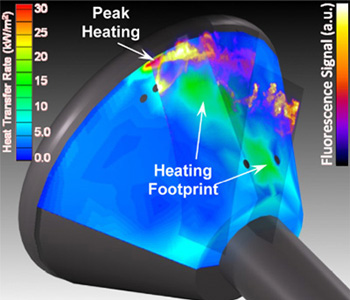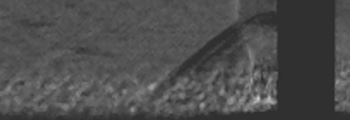Lead: Dr. Christopher Combs
The Center performs a synergistic experimental and computational effort aimed at improving the fidelity of the current state-of-the-art in aerodynamic modelling across a range of flow regimes, from relatively low-speed subsonic flows to hypersonic conditions.
Canonical experiments representative of current modelling challenges will be carried out at The University of Texas at San Antonio and NASA facilities. These experiments provide validation-quality data to The University of Texas at San Antonio, NASA , and SwRI collaborators that should aid in the development of physics-based models for a variety of flow problems across a range of flow regimes.
The Center focuses on three canonical problems related to current NASA challenges in order to provide experimental data that can be used for the advancement of computational fluid dynamics (CFD) models:
1. Jet-In-Crossflow
Experiments focus on measurements that will correlate surface heating and pressure to jet fluid motion, in an attempt to isolate the physics responsible for observed surface heating augmentation and control authority uncertainties.

2. Shock-Wave/Boundary-Layer Interactions (SWBLI)
Experiments explore the impact of the incoming boundary layer state (laminar vs. transitional vs. turbulent) on the dynamics of SWBLI unsteadiness. The experiments will be completed in tandem with modelling efforts at NASA Langley Research Center (LaRC).

3. Juncture Flows
Experiments to characterize the formation of vortices and document the generation of secondary motion in flows with varying juncture angle.

Center students learn to use a battery of optical diagnostic techniques to provide validation-quality data on these experiments. Opportunities for students to implement these non-intrusive optical measurements into the polar sea ice and atmospheric science field experiments are explored.
Each year, two Center students summer intern at the NASA Langley Research Center.
Virtual Tour: Hypersonic Lab


